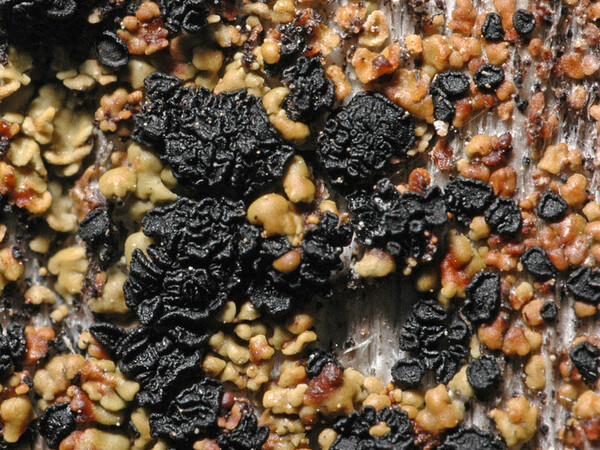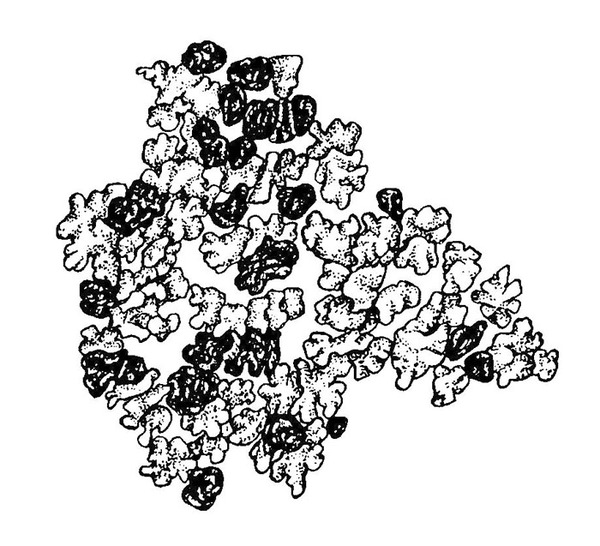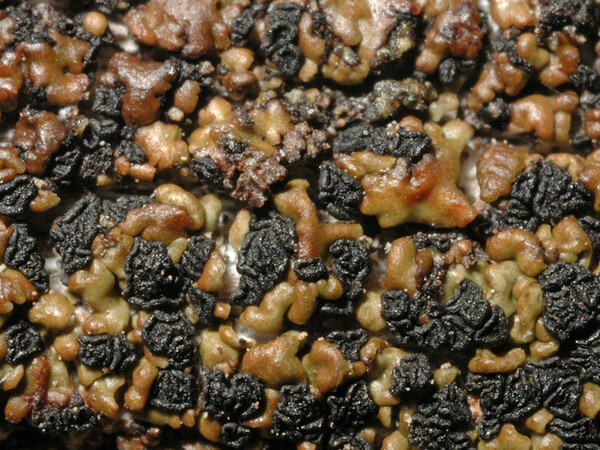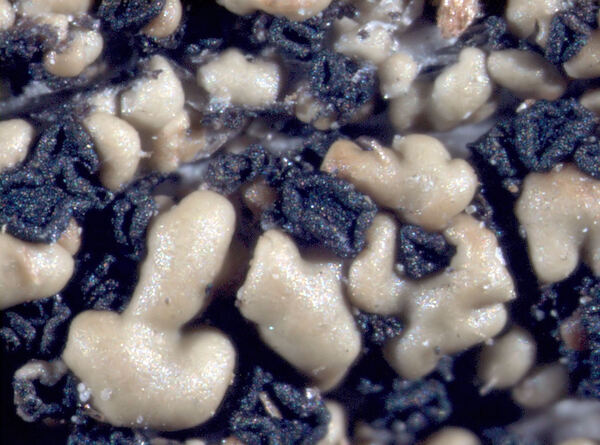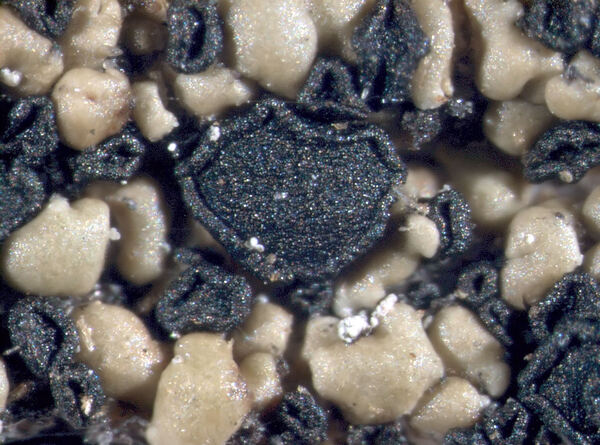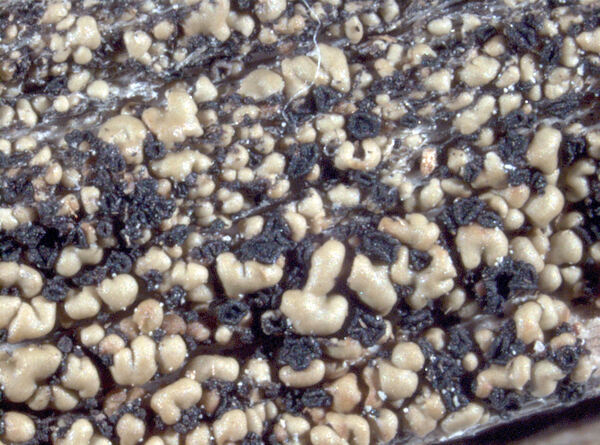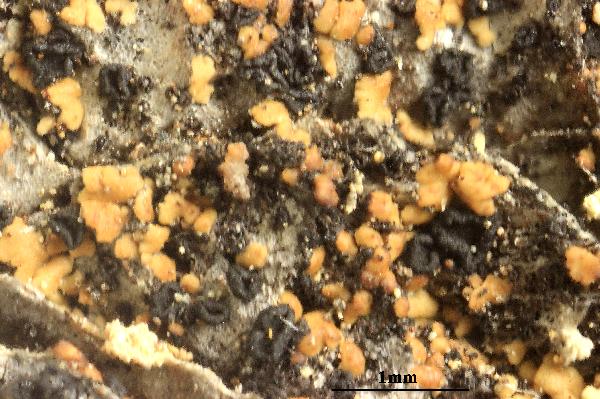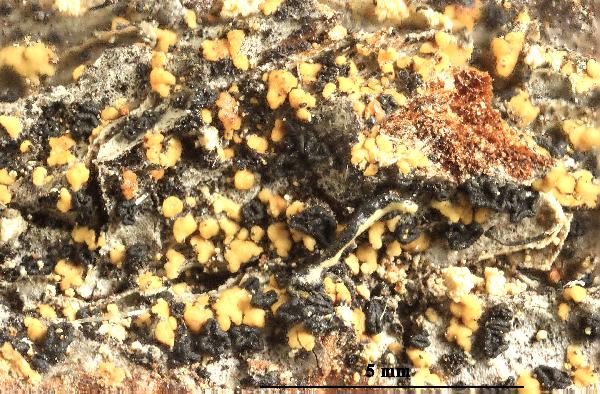Xylopsora friesii (Ach.) Bendiksby & Timdal
Taxon, 62: 953, 2013. Basionym: Lecidea friesii Ach. in Liljeblad - Utkast Svensk Flora, 3: 610, 1816.
Synonyms: Hypocenomyce friesii (Ach.) P. James & Gotth. Schneid.; Psora friesii (Ach.) Hellb.; Psora ostreata var. athroocarpa Anzi
Distribution: N - TAA (Nascimbene 2005, Nascimbene & al. 2006e, 2022, Nimis & al. 2015), Lomb. C - Tosc.
Description: Thallus squamulose, the squamules up to 1(-1.5) mm wide, adpressed or rarely ascending, concave to weakly convex, grey green to dark brown, usually shiny, crenulate or incised. Upper cortex of thin-walled hyphae, up to 50 µm thick, including the up to 30 µm thick epinecral layer; lower cortex absent. Apothecia lecideine, usually abundant, up to 1(-1.5) mm across, laminal, with a black, epruinose and sometimes gyrose disc and a prominent, more or less flexuose, persistent proper margin. Proper exciple of closely conglutinated hyphae, brownish black in outer part, dark brown within, N-; epithecium dark brown, N-; hymenium colourless 45-60 µm high; paraphyses long-celled, sparingly branched. Asci 8-spored, narrowly rhombic, with an apical amyloid cap and a small, amyloid tholus containing a non-amyloid central plug. Ascospores 1-celled, hyaline, ellipsoid, 4.5-8 x 2-4 µm. Pycnidia black, sessile, with a brown-black wall, N-. Conidia narrowly, hyaline, ellipsoid to shortly bacilliform, 2.5-5 x c. 1 µm. Photobiont chlorococcoid. Spot tests: cortex and medulla K-, C-, KC-, P-; cortex UV-, medulla UV+ faintly white. Chemistry: friesiic acid in the medulla.
Note: a mainly boreal-montane lichen found on bark of conifers (especially Pinus) and on charred wood, with optimum in the upper montane and subalpine belts; perhaps more widespread in the Alps. It is included in the Italian red list of epiphytic lichens as “Critically Endangered” (Nascimbene & al. 2013c).
Growth form: Squamulose
Substrata: lignum
Photobiont: green algae other than Trentepohlia
Reproductive strategy: mainly sexual
Commonnes-rarity: (info)
Alpine belt: absent
Subalpine belt: very rare
Oromediterranean belt: absent
Montane belt: extremely rare
Submediterranean belt: absent
Padanian area: absent
Humid submediterranean belt: absent
Humid mediterranean belt: absent
Dry mediterranean belt: absent
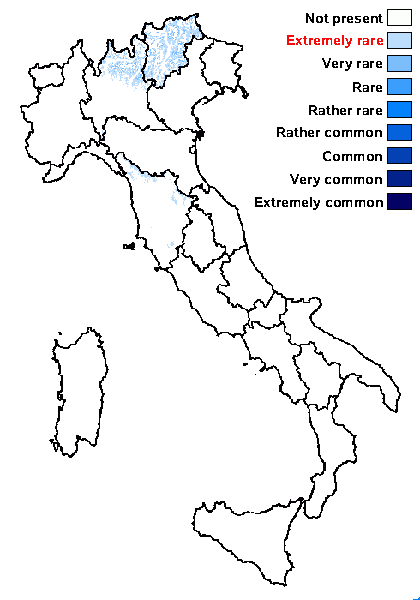
Predictive model
Herbarium samples
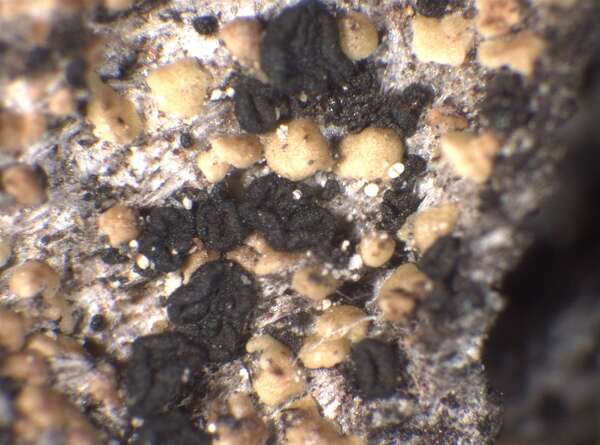

P.L. Nimis; Owner: Department of Life Sciences, University of Trieste
Herbarium: TSB (34264)
2003/03/12
Growth form: Squamulose
Substrata: lignum
Photobiont: green algae other than Trentepohlia
Reproductive strategy: mainly sexual
Commonnes-rarity: (info)
Alpine belt: absent
Subalpine belt: very rare
Oromediterranean belt: absent
Montane belt: extremely rare
Submediterranean belt: absent
Padanian area: absent
Humid submediterranean belt: absent
Humid mediterranean belt: absent
Dry mediterranean belt: absent

Predictive model
| Herbarium samples |


 INDEX FUNGORUM
INDEX FUNGORUM
 GBIF
GBIF
 DOLICHENS
DOLICHENS
